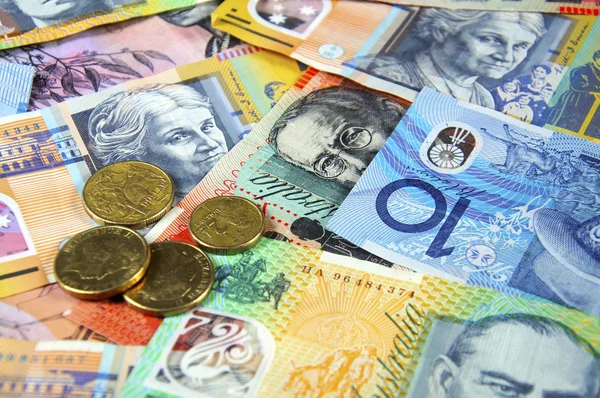The Australian Dollar (AUD) continued its bullish momentum on Friday, posting its fifth consecutive day of gains against the US Dollar (USD). The upward trajectory of the AUD/USD pair being driven by a combination of fundamental and geopolitical factors, including growing concerns over the future independence of the US Federal Reserve, evolving political risks surrounding US-Iran tensions, and signs of labor market resilience in Australia.
The AUDUSD pair has gained significant ground this week, climbing steadily as traders shift capital flows towards risk-sensitive currencies. This risk-on sentiment follows diplomatic overtures between Iran and the US, as well as market worries about Fed credibility amid signs of political interference by US President Donald Trump.
Fed in the crosschairs: Trump influence sparks Fears of political interference.
One of the dominant narratives weakening the US Dollar is the fear that the independence of the Federal Reserve may be compromised. President Trump’s recent comments have rekindled concerns about his growing influence over US monetary policy. Trump noted this week that he has narrowed down the list of candidates to succeed Fed Chair Jerome Powell to “three or four people,” raising alarms in the financial community over potential politicization of the central bank.
Trump’s desire to replace Powell—a critic of Trump’s earlier trade policies and interest rate pressures—with someone potentially more aligned with his fiscal stance, has spooked investors. Names circulating as potential replacements include former Fed Governor Kevin Warsh and NEC Director Kevin Hassett—both perceived as dovish and politically friendly. This adds an element of uncertainty over future interest rate paths, undermining USD confidence.
US Dollar Slumps as Fed Dilemma and Tariff Inflation Dominate
The US Dollar Index (DXY), which gauges the greenback’s value against a basket of major currencies, has slipped to near 97.40. The decline is fueled by investor apprehensions that political influence could steer the Fed towards premature rate cuts or hinder its inflation-fighting mandate.
Fed Chair Jerome Powell has warned that the administration’s tariff-driven policies could lead to short-term price increases and possibly even longer-term inflation pressures. While Powell reaffirmed a cautious approach toward rate cuts, suggesting any adjustments may not come until Q4, his stance was echoed by Minneapolis Fed’s Neel Kashkari and Kansas City Fed’s Jeff Schmid, who advocated a wait-and-see approach.
Chicago Fed President Austan Goolsbee attempted to calm markets, noting that political waves have no bearing on monetary decisions. However, these assurances have done little to completely dispel the growing unease among investors who fear a shift in the Fed’s independence.
Ceasefire in the Middle East Fuels Risk-On Rally
Adding to the tailwinds behind the Australian Dollar is the fragile ceasefire agreement between Israel and Iran brokered by the US. The deal, though tentative, has reduced immediate geopolitical tensions in the region and softened demand for safe-haven assets like the US Dollar, Japanese Yen, and Gold.
President Trump announced that US-Iran talks would be held next week but also questioned the need for a nuclear diplomacy track, stating that American airstrikes had already inflicted substantial damage on Iranian nuclear infrastructure. Despite these statements, the resumption of dialogue between two long-standing adversaries has shifted global market sentiment toward optimism.
However, the underlying risks persist. According to Reuters, a US intelligence report suggests that the strikes on Iran’s nuclear facilities only temporarily delayed Tehran’s program. Iran, meanwhile, insists its nuclear ambitions continue unimpeded.
Australian Labor Market Shows Resilience Despite Economic Softness
On the domestic front, Australia’s economy is offering mixed but relatively encouraging signals. The Australian Bureau of Statistics reported a 2.9% rise in job vacancies in the three months ending May, partially recovering from a 4.3% drop in the previous quarter.
Sectors such as construction and professional services are driving this rebound, suggesting that businesses remain cautiously optimistic despite broader economic concerns. Although total job vacancies were still down 2.8% year-on-year—marking the smallest decline in two years—this improvement has added credibility to the Reserve Bank of Australia’s cautious stance.
The uptick in labor demand has helped insulate the AUD from global shocks and supports the central bank’s case to hold off on further easing, particularly as wage growth remains moderate and inflation expectations hover within a manageable range.
RBA Expected to Stay on Hold Amid Steady Domestic Indicators
The Reserve Bank of Australia (RBA) has recently maintained a neutral stance, signaling a reluctance to adjust interest rates amid global volatility. With inflation trends stabilizing and the labor market showing resilience, policymakers may prefer to observe global developments—particularly the Fed’s direction—before making any major moves.
Markets currently price in a modest probability of a rate cut by year-end, but this could shift dramatically if the US Fed moves more aggressively or if Chinese economic conditions deteriorate. Australia’s close trade ties with China mean that any major downturn in Chinese demand would have immediate ripple effects.
China’s Confidence Boosts Commodity Currencies Like the Australian Dollar
China, Australia’s largest trading partner, has also helped prop up the Australian Dollar this week. The National Development and Reform Commission (NDRC) stated that the country remains confident in minimizing external shocks through robust policy measures.
Premier Li Qiang added that Q2 economic indicators are stable and that the domestic economy retains strong momentum. These statements come at a time when the global market is watching China closely amid ongoing Western tariffs and supply chain adjustments.
Any signs of stability or policy easing in China seen as positive for commodity-linked currencies like the AUD, which heavily influenced by Chinese demand for Australian exports such as iron ore, coal, and LNG.
Key Data Watch: US PCE Price Index in Focus
Looking ahead, market participants will closely watch the release of the US May PCE Price Index—the Fed’s preferred inflation gauge. A hotter-than-expected reading could reignite inflation fears and renew speculation about the Fed’s rate path, while a soft print may strengthen the case for easing later this year.
If the PCE data surprises to the upside, the USD could claw back some losses, but the broader outlook remains clouded by political uncertainty. Conversely, if the data comes in softer, the Aussie could extend its upward momentum against the greenback.
Technical Outlook: AUDUSD Eyes 0.6850 Resistance
From a technical perspective, the AUDUSD pair is testing the 0.6820 level, with a possible push toward the next key resistance around 0.6850. If momentum sustains, a breakout above 0.6850 could open the door toward 0.6900 in the coming sessions.
Support sits near the 0.6760 zone, and a failure to hold this level could invite selling pressure. However, as long as the pair remains above 0.6700, the short-term bias favors the bulls.
Conclusion: Australian Dollar Gains Driven by Fed Politics, Labor Resilience, and China Optimism
The Australian Dollar recent gains reflect a convergence of favorable local and global factors. While geopolitical risks in the Middle East and the evolving situation around US Fed leadership continue to dominate headlines, Australia’s job market recovery and China’s economic stability lend support to the Aussie’s rally.
However, risks remain on both sides of the AUDUSD equation, including inflationary shocks, Fed policy shifts, and lingering uncertainty over the Israel-Iran ceasefire. Traders should remain cautious and closely monitor upcoming US inflation data and Fed commentary.
The AUD is rising due to improved global risk sentiment, concerns over Fed independence, stable Chinese outlook, and resilient Australian labor market data.
Trump’s potential appointment of a politically aligned Fed chair may erode market confidence in central bank independence, weakening the USD.
AUD/USD faces resistance at 0.6850. A breakout could target 0.6900, while support lies around 0.6760.









